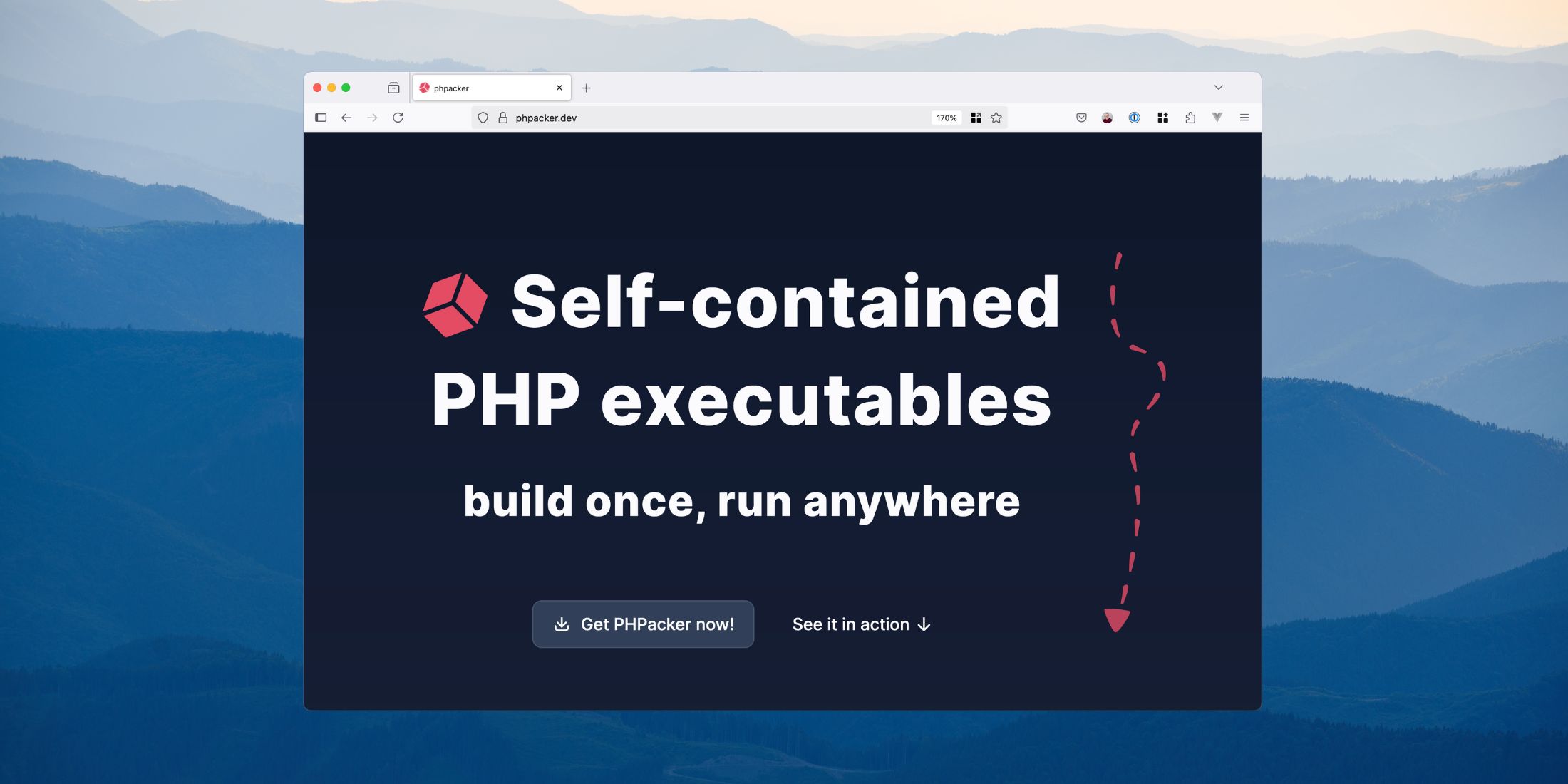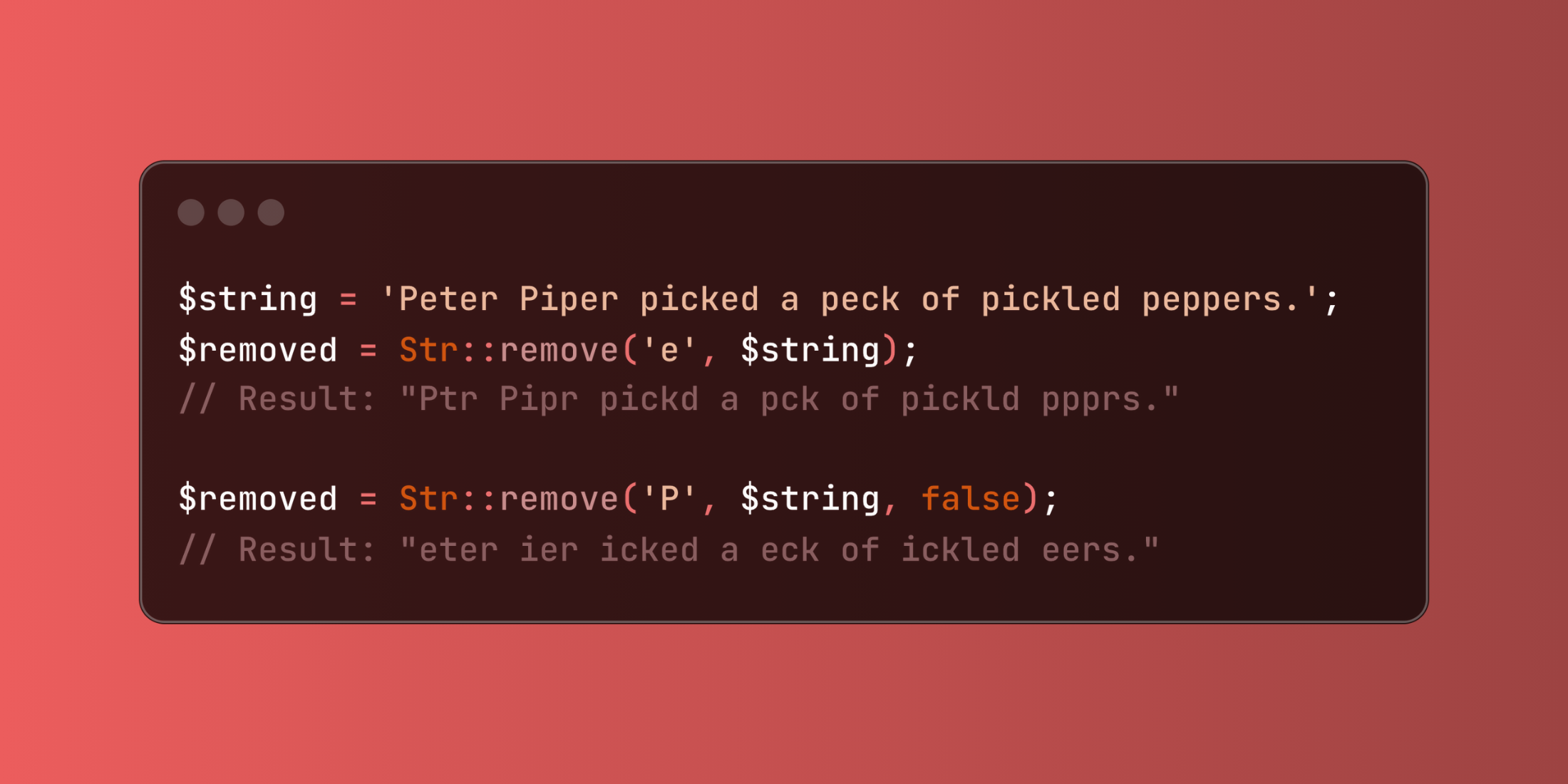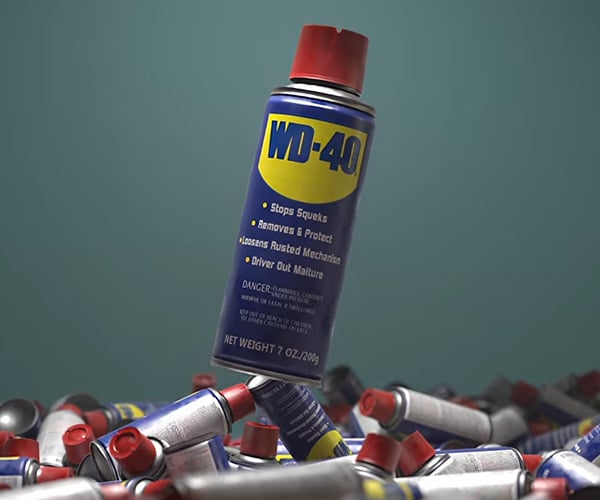Everything hinges upon HTTP. It stands for Hypertext Transfer Protocol, and refers to the set of rules…Laracasts
Create Self-Contained PHP Executables with PHPacker
https://picperf.io/https://laravelnews.s3.amazonaws.com/featured-images/phpacker.jpg
PHPacker enables you to package any PHP script or PHAR into a standalone, cross-platform executable. It handles all the complexity of bundling PHP with your application, making distribution simple and hassle-free.
The post Create Self-Contained PHP Executables with PHPacker appeared first on Laravel News.
Join the Laravel Newsletter to get all the latest
Laravel articles like this directly in your inbox.
Laravel News
String Manipulation with Laravel’s remove Method
https://picperf.io/https://laravelnews.s3.amazonaws.com/featured-images/21-03-2025-crimson-str-remove-export.png
Improve string manipulation in your Laravel applications with the Str::remove method. This utility makes character removal operations more readable while supporting both single character and array-based pattern removal.
The post String Manipulation with Laravel’s remove Method appeared first on Laravel News.
Join the Laravel Newsletter to get all the latest
Laravel articles like this directly in your inbox.
Laravel News
Laravel Starter Kits: A New Beginning for Your Next Project
We’ve overhauled our starter kits, replacing Jetstream and Breeze with three distinct, purpose-built starter kits in Livewire, React, and Vue. These new kits allow you to focus on building your app instead of creating boilerplate code from scratch.Laravel
The History of WD-40
https://theawesomer.com/photos/2025/03/wd_40_t.jpg
We’ve had at least one can of WD-40 in our house for as long as we can remember. This spray-on lubricant has gotten us out of numerous jams over the years, from stuck screws to squeaky door hinges. But where did this miracle substance get its start? Layers delves into the history and original purpose of this incredibly useful invention.
The Awesomer
Scientists Announce Possible Breakthrough in Delaying Alzheimer’s
https://gizmodo.com/app/uploads/2025/03/Brain-MRI.jpg
We might be on the precipice of a pivotal moment in Alzheimer’s disease research. In clinical trial data released this week, scientists have presented early evidence that it’s possible to delay symptoms in people genetically fated to develop Alzheimer’s at a young age.
Researchers at the Washington University School of Medicine led the study, which aimed to test whether an experimental anti-amyloid drug called gantenerumab could help people with an inherited form of Alzheimer’s. In a subset of patients treated the longest, the drug appeared to reduce their risk of developing symptoms as expected, by 50%. The findings will require a follow-up, but outside experts are cautiously optimistic about what this could mean for the future of treating Alzheimer’s.
“The results make it clear that there is good hope that treatment of [Alzheimer’s] pathology in the preclinical stages of pathology may be effective at slowing or preventing disease onset,” Thomas M. Wisniewski, the director of the Center for Cognitive Neurology at NYU Langone Health, who is not affiliated with the research, told Gizmodo.
Gantenerumab is one of many similar drugs that scientists have developed for Alzheimer’s. It’s a lab-made antibody that targets beta amyloid, one of two proteins thought to play a critical role in causing Alzheimer’s (the other being tau). In people with Alzheimer’s, a misfolded version of amyloid beta builds up in the brain, forming into hardy clumps known as plaques that eventually riddle the organ. Scientists have theorized that it’s possible to stop or at least slow down Alzheimer’s with drugs such as gantenerumab that break up and prevent these plaques from forming.
Unfortunately, it hasn’t been a smooth ride for this hypothesis. Many anti-amyloid drugs have shown promise early on, only to fail in larger trials that tested them for people already beginning to experience Alzheimer’s symptoms. That list includes gantenerumab; in late 2022, pharmaceutical company Roche shut down its development of the drug after a pair of Phase III trials failed.
But more recent anti-amyloid drugs have demonstrated a modest but noticeable effect in slowing down Alzheimer’s, enough to win approval from the Food and Drug Administration. Some researchers, including at WashU Medicine, hoped that anti-amyloid treatment could be more effective when administered long before the appearance of Alzheimer’s symptoms.
Starting in 2012, the researchers and others launched prevention trials testing anti-amyloid agents in people with dominantly inherited Alzheimer’s, a genetic condition that all but guarantees the development of dementia sometime between a person’s 30s and 50s. Most of these trials haven’t yielded success, except possibly for the one with gantenerumab.
When the original gantenerumab study concluded in 2020, the researchers found that it reduced people’s amyloid levels. But it was too early to know whether it might delay people’s symptoms, since most patients at the start of the study weren’t expected to become sick for another 10 to 15 years. The researchers then decided to openly provide gantenerumab to its patients (including those who were taking a placebo or another drug) as part of an extension study.
It’s the latest results from this study, published Wednesday in The Lancet Neurology, that has people excited.
“Everyone in this study was destined to develop Alzheimer’s disease and some of them haven’t yet,” said senior author Randall J. Bateman, a professor of neurology at WashU Medicine, in a statement from the university. “We don’t yet know how long they will remain symptom-free—maybe a few years or maybe decades.”
That said, there are important caveats to the study.
For one, the findings only hint at a potential preventative benefit, Wisniewski notes. Though the drug may have reduced the risk of cognitive decline in the overall larger group of symptomless people, this reduction wasn’t statistically significant (possibly because of the study’s low patient numbers, 73 in total, Wisniewski says). In the subset of asymptomatic patients who were treated the longest—about eight years on average—the drug seemed to reduce their expected chances of cognitive decline by 50%. But this subset only included 22 patients, an even smaller sample size.
The trial also ended earlier than expected for many patients due to Roche’s abandonment of the drug, and some people dropped out for other reasons. The drug appeared to be generally safe and tolerable, though about a third developed amyloid-related imaging abnormalities, or ARIAs, which are markers of swelling or bleeding of the brain. ARIAs are a known side-effect of these drugs, though most episodes are unnoticed by patients. Two patients did experience severe ARIAs, which prompted the researchers to stop treatment, after which they recovered. No life-threatening events or deaths were reported during the study.
All in all, the study is not definitive proof that anti-amyloid drugs can work for Alzheimer’s this far in advance. But since this form is essentially inevitable, these results are the first from a clinical trial to suggest it could be treated. Coupled with the earlier approvals of lecanemab and donanemab for the classical version of the neurodegenerative disorder, there does seem to be something real here.
“We already know from the lecanemab and donanemab data that anti-amyloid antibodies (AAAs) can slow progression of common, sporadic Alzheimer’s,” Sam Grady, associate director of the Alzheimer’s Disease Research Center at Mount Sinai, told Gizmodo. “This paper focuses on using a different AAA (gantenerumab) to demonstrate a similar phenomenon is true in genetic early onset Alzheimer’s,” added Grady, who’s not affiliated with the new research.
Grady, Wisniewski, and the study researchers themselves all agree that this is only the beginning. There are indeed prevention trials ongoing right now for both early-onset and classic Alzheimer’s, including several being run by WashU through its Dominantly Inherited Alzheimer Network-Trials Unit. These trials are testing approved and newer experimental anti-amyloid drugs that could show even more of a protective benefit than gantenerumab. The researchers were also able to switch many of their patients in the original extension study to lecanemab, though the data from this phase remains to be analyzed.
It’s early days, but there might be genuine hope for this incurable disease on the horizon.
Gizmodo
Plex ups its price for first time in a decade, changes remote-streaming access
https://cdn.arstechnica.net/wp-content/uploads/2025/03/plex_image1-1152×648.jpg
Plex is a bit hard to explain these days. Even if you don’t know its roots as an outgrowth of a Mac port of the Xbox Media Center project, Plex is not your typical "streaming" service, given how most people use it. So as Plex announces its first price increase to its Plex Pass subscription in more than 10 years, it has its work cut out explaining why, what’s included, and what is changing.
Starting April 29, the cost of a Plex Pass rises from $4.99 to $6.99 monthly, from $39.99 to $69.99 annually, and a lifetime pass now costs $249.99, previously $119.99. In a blog post, Plex cites rising costs and its commitment to an independent service that supports "personal media."
"We are all in on the continued success of Plex Pass and personal media," the post states. "This price increase will ensure that we can keep investing dedicated resources in developing new features, while supporting and growing your favorites." The post cites a roadmap that contains an integration with Common Sense Media, a new "bespoke server management app" for managing server users and "an open and documented API for server integrations," including custom metadata agents.
Someone in a remote video stream must have a Pass
And then, after that note, Plex hits the big change: Streaming "personal media"—i.e. video files, not audio, photos, or offerings from Plex’s ad-supported movies and TV—from outside your own network will no longer be a free Plex feature, starting April 29. "Fully free" might be the better way to put it, because if a server owner has a Plex Pass subscription, their users can still access their server for free.
But if you’ve been hosting your own Plex server to maintain access to your stuff while you’re away or relying on the kindness of non-Pass-having friends with servers, either you or your server-owning friends will need a Plex Pass subscription by the end of April.
Alternatively, you, as a non-server-running Plex viewer, can get a cheaper Remote Watch Pass, $1.99 per month or $19.99 a year. That doesn’t include Plex Pass features like offline downloads, skipping a show intro or credits, or the like, but it does keep you connected to your "personal media" vendors.
Ars Technica – All content
Ballerina‘s New Trailer Teases a John Wick Showdown for the Ages
https://gizmodo.com/app/uploads/2025/03/ballerina-john-wick-fight-keanu-reeves-ana-de-armas.jpg
Lionsgate has released a new trailer for the John Wick spin-off movie with too many SEO-centric words stuffed in its title, From the World of John Wick: Ballerina, starring Ana de Armas. Long-ass name aside, the new trailer kicks all kinds of ass.
Set to the dark movie trailer rendition of Charli XCX’s Brat bop, “Von Dutch,” the trailer opens on a Slavic mythological monologue about a kikimora spirit that enacts vengeance on people with darkness in their hearts, while serving as the protector of the innocent. It doesn’t take a college degree to surmise that the monologue intercutting with the previous Ballerina trailer’s footage of De Arma’s Eve tearing shit up in a nightclub would hint very clearly at her being said kikimora. Our guess is her shooting a woman in the crotch denotes that the unfortunate soul had darkness in their heart that needed to be dealt with expeditiously.
As we’ve seen in the past trailer, Eve is on a warpath to find the people who killed her father. Her only clue is a mysterious tattoo. She gets closer to her goal with the help of the Continental’s Winston Scott (Ian McShane) and Charon (the late Lance Reddick). After blowing people up with grenades behind a door, lighting people on fire with a flamethrower, and shooting fools from the open door of her t-bonned car, the only thing left standing in Eve’s way is a showdown with John Wick.
While the new trailer is certainly intriguing, it does feel like it should’ve been the first trailer we saw as opposed to the second when you take into consideration the previous trailer all but defused any tension from Eve and John’s fight by showing them work together in a sort of passing of the torch capacity. Sure, we know they’re gonna fight, and it’s probably gonna look fantastic, but maybe don’t show them being hunky dory in our first look and defuse all the tension from their quarrel? To the trailer’s credit, knowing the film takes place in the middle of John Wick: Chapter 3 – Parabellum and John Wick: Chapter 4 leaves room to wonder whether Eve survives her revenge tour.
Guess we’ll have to wait and find out what becomes of Eve when Ballerina releases on June 6.
Want more io9 news? Check out when to expect the latest Marvel, Star Wars, and Star Trek releases, what’s next for the DC Universe on film and TV, and everything you need to know about the future of Doctor Who.
Gizmodo
AWS Developer Center for PHP
https://picperf.io/https://laravelnews.s3.amazonaws.com/featured-images/php-aws.png
Find tools, docs and sample code to help you run PHP applications on the AWS cloud
The post AWS Developer Center for PHP appeared first on Laravel News.
Join the Laravel Newsletter to get all the latest
Laravel articles like this directly in your inbox.
Laravel News
Manage Global Data in Laravel with the World Package
https://picperf.io/https://laravelnews.s3.amazonaws.com/featured-images/world-LN.png
The World is a Laravel package that provides a comprehensive list of countries, states, cities, timezones, currencies, and languages.
The post Manage Global Data in Laravel with the World Package appeared first on Laravel News.
Join the Laravel Newsletter to get all the latest
Laravel articles like this directly in your inbox.
Laravel News




